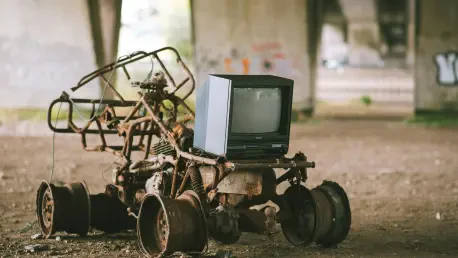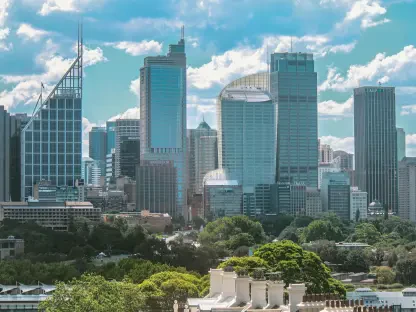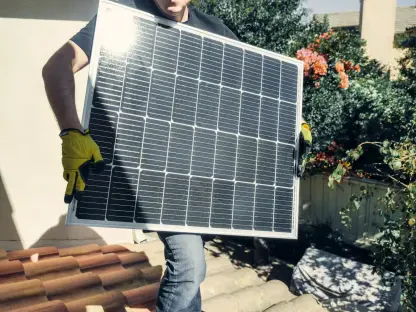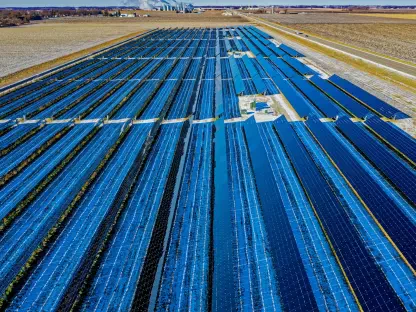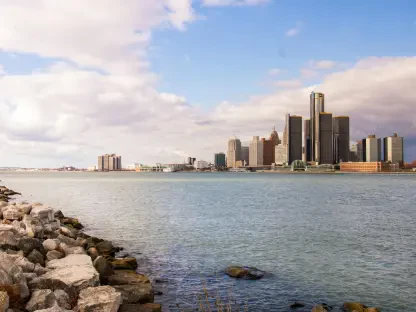In a world grappling with overflowing landfills and environmental decline, an extraordinary exhibition at the Dennos Museum Center in Traverse City, Michigan, offers a fresh perspective on sustainability through the lens of creativity. Running from June 20 to August 8, this captivating display, born from Recology’s artist-in-residence program based in San Francisco, features the groundbreaking work of 33 artists who have turned discarded materials into powerful artistic statements. Hosted at Northwestern Michigan College, the exhibit welcomes visitors Tuesday through Sunday from 11 AM to 4 PM, providing a broad window for the public to engage with its thought-provoking message. Far from a typical art show, this collection challenges conventional views on waste by showcasing how items once deemed useless can be reimagined into objects of beauty and meaning. It serves as both an aesthetic experience and an educational platform, urging attendees to reflect on their own consumption habits. Nestled within a vibrant cultural hub, the exhibition aligns with a host of other events and displays at the museum, amplifying its impact through a shared focus on heritage, diversity, and environmental awareness. This unique intersection of art and ecology sparks curiosity about how creativity can address pressing global issues, setting the stage for a deeper exploration of its themes and context.
Art as a Catalyst for Environmental Change
The core of this exhibition lies in its ability to transform the mundane into the extraordinary, with Recology’s innovative residency program playing a pivotal role in this process. By providing artists with stipends, dedicated studio space, and access to materials scavenged from San Francisco’s Transfer Station and Recycling Center, the initiative fosters an environment where waste becomes a canvas for imagination. The resulting works—likely spanning sculptures, installations, and mixed-media pieces—carry a profound message about renewal and resourcefulness. Each piece stands as a testament to the idea that what society discards can hold untapped potential, offering a visual narrative that resonates with contemporary concerns about overconsumption. Visitors are invited to see beyond the surface, recognizing the environmental implications woven into every creation. This approach not only highlights artistic ingenuity but also positions the exhibit as a vital tool for raising awareness about sustainable practices in a time when such consciousness is urgently needed.
Beyond the physical artworks, the exhibition serves as a springboard for dialogue on environmental stewardship. The act of repurposing waste into art challenges attendees to reconsider their daily interactions with disposable items, prompting questions about personal responsibility in reducing landfill contributions. This educational aspect aligns seamlessly with Recology’s mission to inspire the public through creative expression, making the display a bridge between aesthetic appreciation and actionable change. Unlike traditional exhibits that may focus solely on visual appeal, this one embeds a call to rethink societal norms around waste. It underscores how art can transcend its decorative purpose to become a medium for advocacy, encouraging a shift in perspective that could ripple into broader community habits and policies aimed at preserving the planet for future generations.
Cultural Vibrancy and Context on the Closing Day
On its closing day, August 8, the exhibition shares the spotlight with a diverse array of cultural offerings at the Dennos Museum Center, reflecting the venue’s role as a nexus for artistic exchange. Concurrent displays, such as one featuring Canadian Woodland artists and another showcasing contemporary Japanese ceramics from a notable collection, enrich the museum’s atmosphere with a variety of traditions and techniques. This blend of exhibitions creates a dynamic environment where different narratives—ranging from indigenous heritage to modern craftsmanship—intersect, providing a broader context for the environmental focus of the Recology artists’ work. The museum’s commitment to accessibility, with consistent operating hours, ensures that a wide audience can experience this confluence of ideas, fostering cross-cultural understanding alongside ecological awareness. Such diversity in programming elevates the impact of each individual show by placing it within a larger conversation about creativity’s role in society.
Meanwhile, the wider Traverse City area buzzes with activity on this significant date, offering a rich backdrop that complements the exhibition’s themes. From art receptions featuring local painters to outdoor community events like historical fairs, the region pulses with a spirit of engagement and celebration. These happenings, spread across galleries, streets, and natural landscapes, highlight a collective appreciation for both artistic expression and the environment, creating an ideal setting for a display centered on sustainability. Events such as guided hikes organized by local conservancies further echo the ecological undertones of the Recology project, reinforcing Northern Michigan’s dedication to its natural surroundings. This vibrant cultural tapestry not only draws attention to the museum’s offerings but also amplifies the resonance of a show that seeks to transform how people view waste, embedding it within a community already attuned to the interplay of art and nature.
Reflecting Regional Values Through Artistic Innovation
The exhibition mirrors a profound regional trend in Northern Michigan where art serves as a powerful medium for education and social connection. Across Traverse City, various initiatives, including community-driven collage projects and collaborative murals, demonstrate a shared belief that creative endeavors should address deeper historical and environmental narratives. These efforts aim to build bridges among diverse groups, fostering a collective understanding of shared challenges and histories. The Recology-inspired display fits seamlessly into this ethos, using reclaimed materials to tell stories of renewal that resonate with local values of stewardship and innovation. By presenting waste as a resource rather than a burden, it contributes to a growing dialogue about how artistic platforms can illuminate pressing issues, encouraging visitors to engage with both the artworks and the ideas they represent in a meaningful way.
Environmental consciousness, a recurring theme in the region, finds a strong ally in this exhibition’s focus on sustainability. Alongside nature-centric events like guided treks through preserved landscapes, the display reinforces a commitment to safeguarding Michigan’s scenic beauty through creative and practical means. This alignment with local priorities—evident in community initiatives that celebrate the outdoors—enhances the relevance of turning discarded items into art. It reflects a broader movement to integrate ecological awareness into everyday life, showcasing how individual actions, mirrored in the artists’ resourceful creations, can contribute to larger conservation goals. The synergy between the exhibit and regional activities underscores a unified vision where protecting the environment is not just a necessity but a celebrated part of cultural identity, inspiring attendees to adopt similar principles in their own lives.
Embracing a Spectrum of Creative Voices
The cultural diversity evident in Traverse City on the exhibition’s final day significantly enriches the reception of the Recology artists’ work. With the Dennos Museum Center hosting an array of displays—from indigenous Canadian artistry to intricate Japanese ceramics—visitors are exposed to a wide range of perspectives that deepen their appreciation for the environmental narrative woven into the reclaimed pieces. This eclectic mix of exhibitions creates a unique opportunity for attendees to draw connections between different forms of expression, recognizing universal themes of transformation and respect for resources across cultures. Such a setting amplifies the impact of the sustainability message by framing it within a global context, where art becomes a common language for addressing shared human concerns, regardless of origin or medium.
Adding to this richness, the community’s calendar brims with events like local performances and heritage fairs, painting Traverse City as a vibrant hub where creativity and tradition converge. This lively atmosphere enhances the exhibition’s appeal, resonating with an audience already immersed in the transformative power of artistic endeavors across various causes and histories. The interplay of these diverse voices—both within the museum and beyond—positions the Recology project as a vital piece of a larger cultural mosaic, one that values innovation alongside reverence for the past and the planet. It highlights how art, in all its forms, can unite people around critical issues, fostering a deeper understanding of sustainability’s importance while celebrating the boundless potential of human imagination to address and overcome modern challenges.
Looking Ahead to Sustainable Inspiration
Reflecting on the impact of this remarkable exhibition at the Dennos Museum Center, it becomes clear that art holds immense potential to reshape perceptions of waste and sustainability. On its closing day, August 8, the display stood as a beacon of innovation, having captivated visitors with its unique blend of creativity and environmental advocacy. The works of the 33 artists, crafted from materials once destined for oblivion, left an indelible mark on those who walked through the galleries, challenging them to see value in the discarded. As the exhibit concluded, its message lingered, woven into the fabric of a community already passionate about cultural and ecological preservation. Looking forward, the legacy of such initiatives can inspire future projects that blend artistic expression with pressing societal needs. Museums and organizations might consider adopting similar residency models to empower creators, while communities could explore local partnerships to turn waste into resources. This exhibition proved that small, thoughtful actions—mirrored in each reclaimed piece—can ignite broader movements, encouraging everyone to play a part in building a more sustainable world through imagination and intent.
